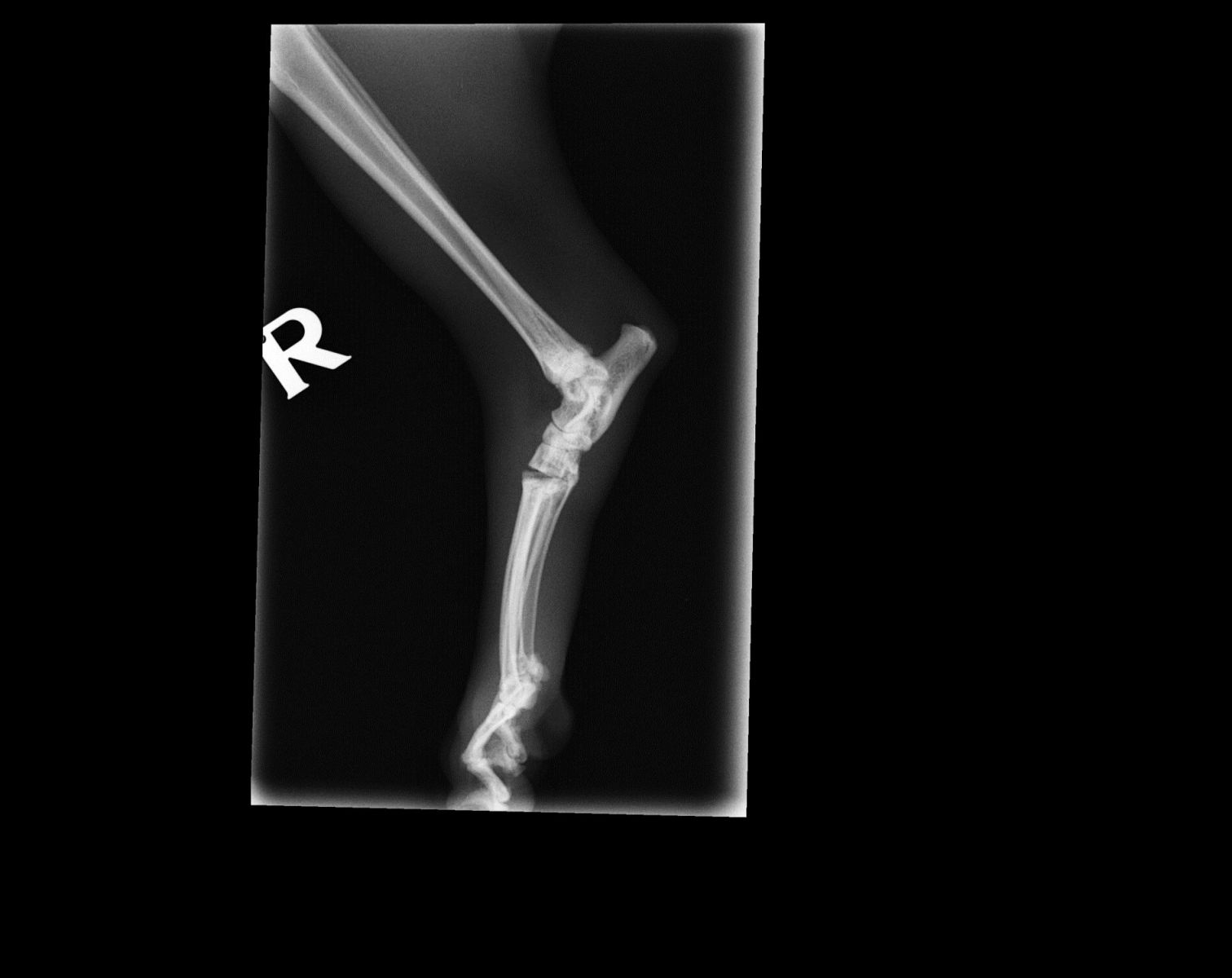
Posted By:
Orthopaedic procedures are performed fairly often here at Shepton Vets, most commonly to repair broken bones, fix displacing kneecaps or correct ligament ruptures within knees. They can be tricky procedures with long recovery times, but extremely rewarding at the end of it all when an animal who was previously unable to walk can run around freely again.
Kitty was brought in by her owner in April for being quiet and secluded, and being off her food. In the consult she was limping on her right back leg and manipulation of the leg revealed a ‘crunchiness’ around the ankle joint. It was decided that we take x-rays to determine exactly what was going on. X-rays revealed no broken bones but a dislocation of the ankle joint, caused by torn ankle ligaments. The ankle is a complex structure made up of articulations between 13 bones and can actually be split down into 4 separate joints due to the number of bones present. Kitty had dislocated the very bottom joint of the ankle which connects to the foot – this was seen as a gap between the bones on x-rays.

[Text Box: An unwanted gap within the ankle]
Kitty was started on pain relief and the leg splinted whilst various options were explore, as unfortunately with this type of dislocation simply putting the bones back into place would not result in a stable enough joint. Eventually it was decided that an operation was to be performed to rigidly fix the dislocated bones back in place to allow the body time to repair the broken ligaments and stabilize the joint.
Kitty was anaesthetized and prepared for the operation. Metal ‘pins’ were placed through the bones above, below and within the ankle, with each pin protruding out of the skin on either side of the leg. The pins were then connected to each other by a metal frame running down each side of the leg to fix the bones in a rigid position. After the operation Kitty was woken up and maintained on pain relief. Due to the high infection risk with this procedure she was covered with antibiotics and was able to go home, again continuing pain relief.
The rehabilitation time following such an operation is longer than normal and Kitty is currently in the middle of her 6 week period of strict rest whilst those ligaments fibrose and heal. She has been seen three times already since the operation, every time looking well and seemingly not bothered by her metalwork, with her owner saying she is comfortable and able to walk on the leg at home. Whilst she still has a little way to go, we are hopeful that the metalwork will be able to be removed in a few weeks time, leaving behind a stable ankle joint and allowing Kitty to move freely on her back legs for years to come.
We all know that early detection and prompt, effective...
©2024 Shepton Veterinary Group Ltd., All rights reserved.
Privacy Policy • Terms & Conditions • Cookie Policy